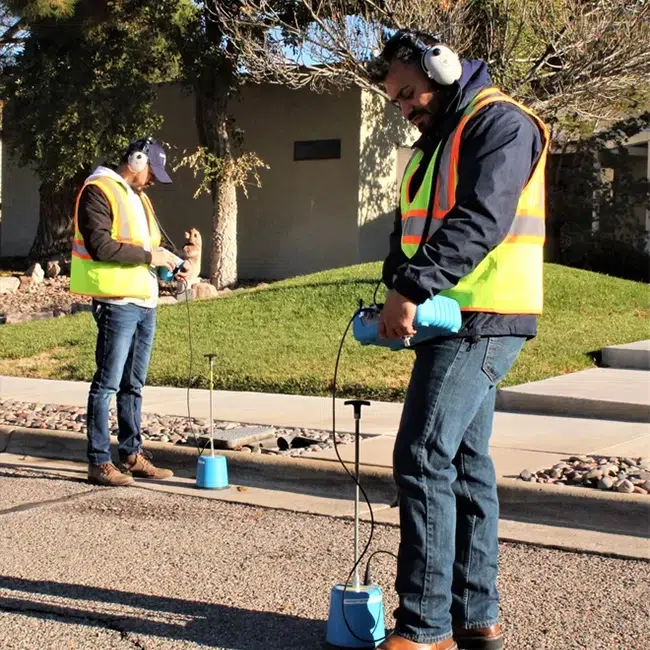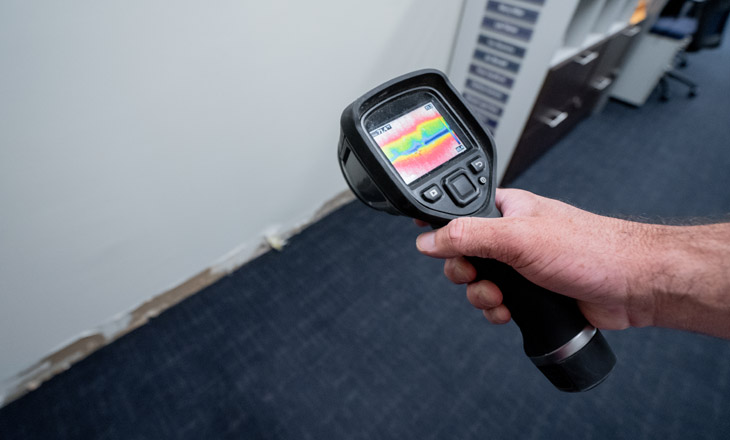The Relevance of Normal Water Leak Detection for Long-Term Home Defense
The Relevance of Normal Water Leak Detection for Long-Term Home Defense
Blog Article
Ingenious Solutions for Very Early Detection of Water Leakages in Structures and Facilities
As the integrity of structures and infrastructure is vital, the difficulty of very early discovery of water leaks has stimulated cutting-edge options that assure to transform the way we protect versus potential problems. From advanced leakage detection technologies to the deployment of IoT sensors for real-time tracking, the landscape of leakage avoidance is advancing quickly. Artificial intelligence algorithms provide a peek right into the future of leak forecast, while thermal imaging offers a non-intrusive technique for determining hidden leaks. Automated water flow analysis systems are improving exactly how leaks are identified and attended to, leading the way for a proactive technique to water leak discovery. Each of these options holds the vital to guaranteeing the integrity and durability of our developed setting, motivating a change towards a more lasting and reliable future.
Advanced Leak Discovery Technologies
Advanced leakage detection innovations, equipped with advanced sensors and algorithms, play an important duty in swiftly identifying and pinpointing water leakages in different setups. These modern technologies utilize a combination of acoustic, thermal, and electro-magnetic sensing techniques to find leakages accurately. Acoustic sensors find the sound of leaving water, permitting precise localization of the leak source. Thermal imaging detects temperature adjustments created by water leakage, offering one more efficient method for leakage recognition. Electromagnetic sensors can recognize adjustments in electro-magnetic fields triggered by water, supplying yet one more layer of leak discovery capability.

IoT Sensors for Real-Time Tracking
In the realm of modern-day water leak detection, the integration of IoT sensing units for real-time tracking represents a crucial development in improving positive leakage detection abilities. These sensors provide continual tracking of water systems, giving real-time information on water circulation rates, pressure variations, and temperature changes. By leveraging IoT technology, these sensing units can detect also the smallest abnormalities in water use patterns, enabling early identification of potential leaks prior to they intensify right into significant concerns.
IoT sensing units transfer information to a centralized platform, where sophisticated algorithms evaluate the information and produce notifies or alerts when abnormalities are detected. This real-time monitoring ability allows homeowner or facility managers to promptly deal with leaks, lessening water damages, lowering repair expenses, and saving water resources.
Moreover, IoT sensing units can be incorporated with building administration systems, permitting computerized responses to discovered leaks, such as shutting down water valves or turning on pumps to minimize the impact of leakages. Generally, the implementation of IoT sensors for real-time surveillance substantially boosts the performance and performance of water leakage detection in buildings and infrastructure.
Artificial Intelligence Algorithms for Leak Forecast

One key benefit of utilizing machine understanding for leak forecast is its capability to continually discover and boost its precision with time. As even more data is collected and fed right into the algorithm, it can refine its predictions and adjust to altering conditions, eventually boosting the dependability of leakage detection systems.
Additionally, device learning algorithms can aid in determining subtle signs of leakages that may go undetected by traditional monitoring methods. water leak detection. By examining complex data collections in real-time, these formulas can give early cautions and alerts, permitting punctual intervention and preventative upkeep to alleviate prospective water damages and connected prices
Making Use Of Thermal Imaging for Leakage Detection
Thermal imaging technology supplies an encouraging method for identifying water leaks in numerous systems and facilities. By using infrared radiation and temperature level variances, thermal imaging electronic cameras can identify covert leakages that are not conveniently noticeable to the naked eye.
Among the essential advantages of Visit Website thermal imaging for leakage detection is its non-intrusive nature. Unlike conventional approaches that might call for breaking right into wall surfaces or floorings to find leakages, thermal imaging permits non-destructive screening. This not just conserves time and minimizes costs yet additionally minimizes disruption to the structure or framework being analyzed. Additionally, thermal imaging can quickly check big locations, offering a thorough review of potential leak resources in a prompt way. In general, using thermal imaging innovation boosts the effectiveness and accuracy of water leak discovery, making it a useful tool for preserving the stability of structures and infrastructures.
Automated Water Flow Evaluation Equipments
Exactly how can computerized water circulation evaluation systems revolutionize the detection and management of leaks in different systems and facilities? Automated water circulation evaluation systems provide a proactive method to leak discovery by continuously keeping track of water circulation rates and patterns. By establishing standard information, these systems can swiftly determine variances that might show a leak, enabling timely treatment to stop extensive damages.
These systems make use of innovative formulas to evaluate real-time data and provide instant alerts when anomalies are spotted, enabling speedy action to be taken. Additionally, automatic water circulation analysis systems can be integrated with structure management systems or IoT systems, improving overall efficiency and allowing remote surveillance capacities.
Additionally, the information gathered by these systems can be used for predictive maintenance purposes, aiding to determine potential weak go to this website factors in the infrastructure before leaks happen. In general, the execution of computerized water flow evaluation systems can considerably boost leak discovery and monitoring practices, ultimately leading to set you back financial savings, lowered water waste, and enhanced sustainability in buildings and facilities.

Conclusion
Finally, the assimilation of sophisticated leak discovery innovations, IoT sensing units, maker discovering algorithms, thermal imaging, and computerized water flow evaluation systems supplies innovative solutions for early discovery of water leaks in buildings and framework. These innovations allow real-time surveillance, forecast of leakages, and effective detection techniques to avoid water damage and wastefulness. Applying these remedies can help in preserving the stability and sustainability of water systems in numerous settings.
Report this page